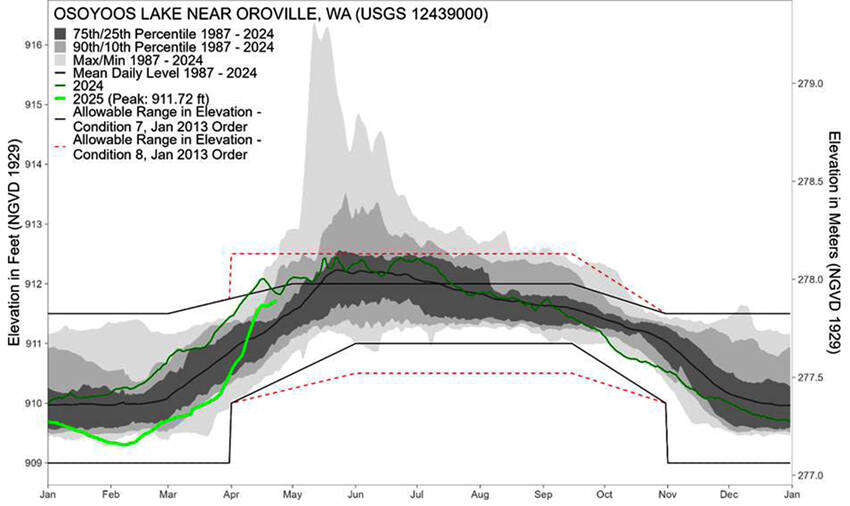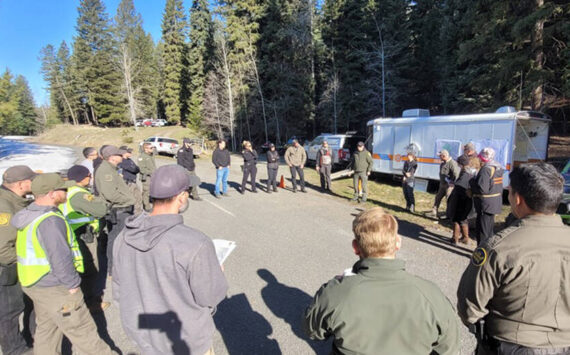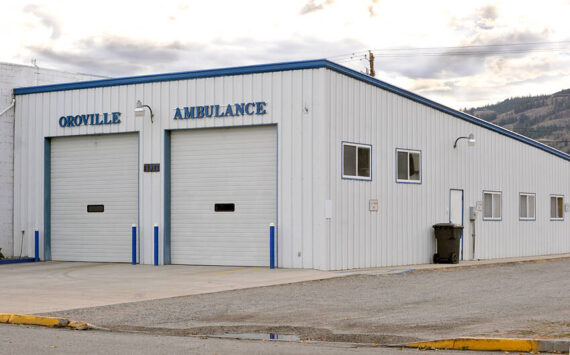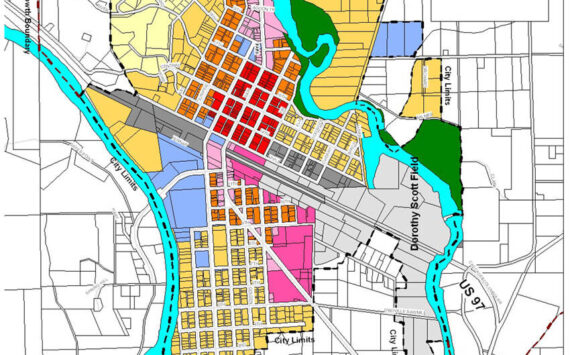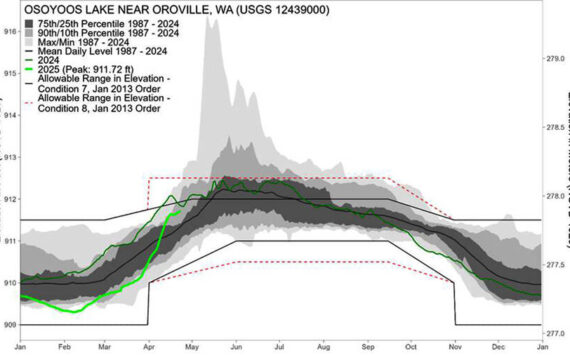OROVILLE/OSOYOOS – Osoyoos Lake levels remained low for much of the 2024-2025 winter, due to low precipitation in the Okanagan basin, but levels are beginning to rise as the lake operator targets summer operational levels to ensure sufficient water for both irrigation and ecological flow needs.
Rain and snowfall in late-March brought much-needed water to the basin, but the snowpack remains low following a couple years of persistently dry conditions. Water managers are closely monitoring conditions in the basin and will keep the public informed of management decisions impacting Osoyoos Lake levels.
Osoyoos Lake levels are higher than typical
Osoyoos Lake levels were very low through much of the winter, but now lake operators are intentionally raising lake levels in preparation for the summer.
As of April 24, the water level in Osoyoos Lake sits at 911.75 ft (277.90 m), which is higher than is typical this time of year (figure 1). Though water levels were low throughout the winter, they have remained within the allowable limits as specified by the International Joint Commission’s Orders.
Upstream of Osoyoos Lake, Okanagan Lake is at a higher-than-normal water level elevation. Okanagan Lake serves as a major water storage location and operators are actively holding water in anticipation of persisting drought conditions. In typical, non-drought years, Okanagan Lake and Osoyoos Lake increase their outflows in the late winter to prepare for the inflow from melting snowpack. Both this year and last, the low snowpack observed in British Columbia led lake operators to hold more water than usual, meaning less water flowed through Osoyoos Lake in winter. Okanagan Lake levels are high because of proactive management decisions, not because there is more water in the Okanagan Basin. Water stored upstream may be released throughout the summer, impacting Osoyoos Lake levels.
Low snowpack in the river basins, wet March
Winter 2024-2025 did not produce much snow. In early April, as reported in the BC Snow and Water Supply Bulletin, the Similkameen and Okanagan Basin Snow Indices were at 63 and 82 percent of normal, respectively. Two snow pillow gauges record the amount of water (snow water equivalent) held in the snowpack. At the Mission Creek station (elevation 1,780 meters or 5,840 feet) in the Okanagan Basin, the April 24 snow water equivalent in the 25th percentile (1969-2025). In the Similkameen Basin, the Blackwell Peak snow pillow (elevation 1,940 meters or 6,365 feet) is in the 8th percentile (1967-2025). March brought higher than normal precipitation to the Okanagan Basin, helping the basin partially rebound from the low winter snowpack.
Looking ahead
The International Joint Commission Order of Approval allows Osoyoos Lake levels to be operated within two elevation ranges during summer months, depending on water availability in the Similkameen and Okanagan Basins. Three criteria are used to determine whether the normal or drought rule curve for Osoyoos Lake levels is enforced.
The first criterion considers the seasonal flow volume in the Similkameen River near Nighthawk, Washington. As of April 24, the April-July 2025 flow volume forecast is 745,000 acre-feet. This is below the 1 million acre-feet threshold, meaning that the drought criteria are met.
The second and third criteria consider Okanagan Lake. Currently, the forecasted Okanagan Lake April-July net inflow and the June or July peak lake elevation are both below the criteria under which the board can make a drought declaration. The April-July net inflow forecast for Okanagan Lake is 267,000 to 285,000 acre-feet, which is above the 195,000 acre-feet threshold. The water level in the lake is forecast to reach 1,122.8 ft, which is above the 1,122.6 ft threshold. At least one of these criteria, in addition to the Similkameen flow forecast, needs to be met before a drought can be declared under the 2013 Order.
The International Osoyoos Lake Board of Control will closely monitor hydrologic conditions during the spring snowmelt period and communicate with lake operators and the public about drought conditions.
